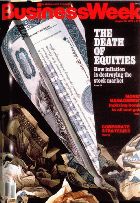
By Scott Ronalds
Roger Lowenstein’s latest article in The New York Times is a must-read. In Taking Stock, Lowenstein (a financial author and journalist) draws parallels between the investment environment and mindset of individual investors today to that of the 1970s.
The most striking similarity between then and now? A disappearance in the “ethos of confidence in long-term investing.” As was the case in the ‘70s, investors are discouraged and tired today. Gloom is selling well. One needs to look no further than the rise of gold and prophecies of economic doom. As noted in the article, one investment strategist recently drew a crowd of 600 people to elaborate on his call for a “bloody, deep recession ... and a stock market crash of at least 60 percent.”
Investors in the U.S. are withdrawing money from equity funds for the third straight year. In Canada, it is no different. Money has been flowing overwhelmingly into bond and income-oriented funds for quite some time. What makes this trend more troubling is the extremely low yields and limited upside of many fixed income securities – government bonds in particular.
What many people are missing, according to Lowenstein, is an important principle of investing:
“What the herd tends to overlook is that stocks are not – except perhaps in the very short term – a bet on the odds of an apocalypse, nor are investors in securities rewarded for their prowess as macroeconomists. The real challenge of investing is so prosaic it is often forgot. Stocks are simply a claim on future corporate earnings: if you can buy those claims at a discount, you should do well.”
The author notes that Business Week proclaimed “The Death of Equities” in 1979. A remarkable bull market arrived in 1982. Many observers are predicting a similar fate for equities today, despite the fact that businesses are profitable and stock valuations are reasonable (particularly in relation to bonds). Beware of buying into the apocalypse.

